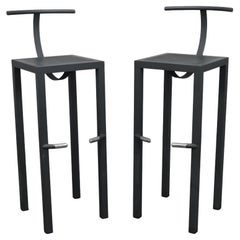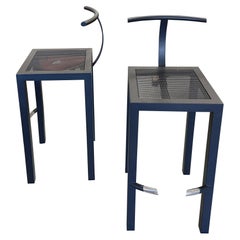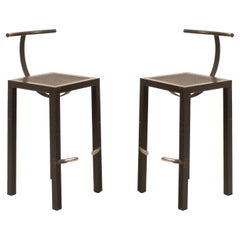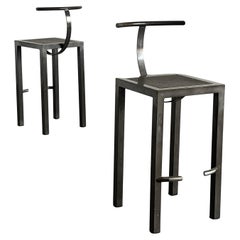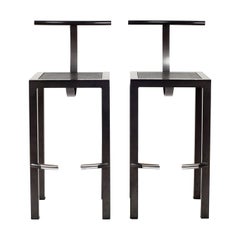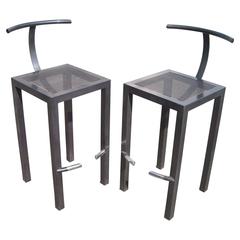Sarapis Starck
Vintage 1980s Italian Post-Modern Stools
Metal
20th Century French Stools
Steel
Vintage 1980s Italian Post-Modern Stools
Steel
Vintage 1980s Italian Post-Modern Stools
Metal
Recent Sales
Vintage 1980s French Modern Stools
Steel
Antique 1890s French Post-Modern Stools
Enamel, Metal
Vintage 1980s French Stools
Steel
20th Century French Post-Modern Stools
Steel
Vintage 1980s Italian Post-Modern Stools
Steel
Vintage 1980s French Modern Stools
Metal
Vintage 1980s French Modern Stools
Steel
Vintage 1980s Italian Post-Modern Chairs
Steel
Vintage 1980s French Stools
Vintage 1980s Italian Post-Modern Stools
Steel
Late 20th Century Italian Post-Modern Stools
Steel
Vintage 1980s French Post-Modern Stools
Enamel, Steel
20th Century Italian Stools
Metal
Mid-20th Century Italian Mid-Century Modern Stools
Metal
Vintage 1980s French Stools
Metal
People Also Browsed
2010s American Ottomans and Poufs
Silk, Oak
2010s German Modern Chandeliers and Pendants
Brass
Mid-20th Century Danish Coffee and Cocktail Tables
Plastic
1990s Italian Post-Modern Sofas
Steel
Vintage 1970s Italian Mid-Century Modern Planters, Cachepots and Jardini...
Ceramic, Pottery
Vintage 1970s Italian Minimalist Table Mirrors
Glass, Plastic
21st Century and Contemporary Italian Modern Armchairs
Cane, Rattan, Wood
1990s Swiss Post-Modern Chairs
Aluminum
21st Century and Contemporary Italian Modern Sofas
Plastic
Mid-20th Century German Space Age Chairs
Velvet, Fiberglass
Vintage 1970s French Mid-Century Modern Wall Mirrors
Chrome
Vintage 1970s Italian Table Mirrors
Marble, Carrara Marble
21st Century and Contemporary Italian Modern Sofas
Metal
20th Century Lounge Chairs
Leather
Vintage 1980s Italian Modern Chairs
Leather, Wood
Vintage 1960s American Mid-Century Modern Planters and Jardinieres
Ceramic
Philippe Starck for sale on 1stDibs
A ubiquitous name in the world of contemporary architecture and design, Philippe Starck has created everything from hotel interiors and luxury yachts to toothbrushes and teakettles. Yet for every project in his diverse portfolio, Starck has maintained an instantly recognizable signature style: a look that is dynamic, sleek, fluid and witty.
The son of an aircraft engineer, Starck studied interior design at the École Nissim de Camondo in Paris. He started his design career in the 1970s decorating nightclubs in the city, and his reputation for spirited and original interiors earned him a commission in 1983 from French president François Mitterrand to design the private apartments of the Élysée Palace. Starck made his name internationally in 1988 with his design for the interiors of the Royalton Hotel in New York, a strikingly novel environment featuring jewel-toned carpeting and upholstery and furnishings with organically shaped cast-aluminum frames. He followed that up in 1990 with an equally impressive redesign of the Paramount Hotel in Manhattan, a project that featured over-scaled furniture as well as headboards that mimicked Old Masters paintings.
Like their designer, furniture pieces by Starck seem to enjoy attention. Designs such as the wedge-shaped J Series club chair; the sweeping molded-mahogany Costes chair; the provocative Ara table lamp; or the sinuous WW stool never fail to raise eyebrows. Other Starck pieces make winking postmodern references to historical designs. His polycarbonate Louis Ghost armchair puts a new twist on Louis XVI furniture; his Out-In chair offers a futuristic take on the classic English high-back chair. But for all his flair, Starck maintains a populist vision of design. While one of his limited-edition Prince de Fribourg et Treyer armchairs might be priced at $7,000, a plastic Starck chair for the Italian firm Kartell is available for around $250. As you will see on 1stDibs, Philippe Starck’s furniture makes a bold statement — and it can add a welcome bit of humor to even the most traditional decor.
Finding the Right Stools for You
Stools are versatile and a necessary addition to any living room, kitchen area or elsewhere in your home. A sofa or reliable lounge chair might nab all the credit, comfort-wise, but don’t discount the roles that good antique, new and vintage stools can play.
“Stools are jewels and statements in a space, and they can also be investment pieces,” says New York City designer Amy Lau, who adds that these seats provide an excellent choice for setting an interior’s general tone.
Stools, which are among the oldest forms of wooden furnishings, may also serve as decorative pieces, even if we’re talking about a stool that is far less sculptural than the gracefully curving molded plywood shells that make up Sōri Yanagi’s provocative Butterfly stool.
Fawn Galli, a New York interior designer, uses her stools in the same way you would use a throw pillow. “I normally buy several styles and move them around the home where needed,” she says.
Stools are smaller pieces of seating as compared to armchairs or dining chairs and can add depth as well as functionality to a space that you’ve set aside for entertaining. For a splash of color, consider the Stool 60, a pioneering work of bentwood by Finnish architect and furniture maker Alvar Aalto. It’s manufactured by Artek and comes in a variety of colored seats and finishes.
Barstools that date back to the 1970s are now more ubiquitous in kitchens. Vintage barstools have seen renewed interest, be they a meld of chrome and leather or transparent plastic, such as the Lucite and stainless-steel counter stool variety from Indiana-born furniture designer Charles Hollis Jones, who is renowned for his acrylic works. A cluster of barstools — perhaps a set of four brushed-aluminum counter stools by Emeco or Tubby Tube stools by Faye Toogood — can encourage merriment in the kitchen. If you’ve got the room for family and friends to congregate and enjoy cocktails where the cooking is done, consider matching your stools with a tall table.
Whether you need counter stools, drafting stools or another kind, explore an extensive range of antique, new and vintage stools on 1stDibs.
